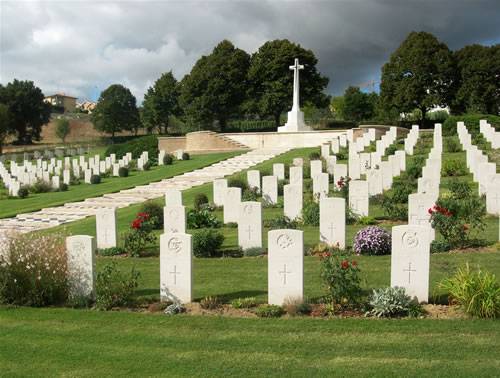In mid-1944, the Allies were driving to Arezzo - a strategic rail and road centre - en route to Florence, both located in central Italy west of Ancona. Tanks of the Ontario and Three Rivers regiments participated, as did New Zealand units. After the New Zealanders took the commanding mountain, Lignano, on July 15, 1944, the Germans retreated. They continued to withdraw, abandoning Ancona before the Poles entered it July 18. The town was relatively undamaged and became the main port of supplies for the Allied attack on the Gothic Line.
Canadians along the coast
The east end of the Gothic Line was located at the port of Pesaro, south of Rimini and north of Ancona. After the line was broken, the Canadians aimed seaward towards the river Conca. They succeeded in reaching the Adriatic and establishing the entire Corps line along the river in the first days of September and then prepared to continue their pursuit of the enemy towards Rimini. The Germans, however, were prepared to contest every inch of ground, which consisted of numerous ridges, spurs, and, of course, rivers and streams, and so a bitter 18-day battle ensued.
Directions
Located 3 kilometres south of the port and resort town of Ancona, and in the midst of the rural region of Tavernelle, this cemetery was chosen by the British army in September 1944 as a site for those initially buried in a wide area ranging from Pescara, 80 kilometres to the south, to Pesaro, 48 kilometres to the north. This includes casualties from the first attacks on the eastern section of the Gothic Line in August 1944 and from subsequent attempts to advance to Rimini. There are 1,021 graves - the majority from the U.K., followed by Canada - and 57 of them are unknown. Of the 161 Canadians buried here, most belonged to the Royal Canadian Regiment (RCR) (33) and the Royal Regiment of Canadian Artillery (22). Two were with the RCAF.
